Someone has to drive this machine, especially when it’s travelling at nearly the speed of light.
Meet (most of) the Main Control Room (MCR) operators who are part of the Accelerator Systems Division in the Advanced Photon Source (APS) at the U.S. Department of Energy’s Argonne National Laboratory.
Every hour of every day, rain or shine, pandemic or no, when the APS is generating x-rays the MCR Group operators, under the direction of Group Leader Randy Flood, monitor electrons that reach roughly 99.99999973% of the speed of light as they race through the incredibly complex technology of the APS particle accelerators, on the way to producing the high-brightness x-ray beams prized by thousands of researchers who use the APS each year.
The MCR operators don’t just stare at screens all day (or night). They maintain beam stability and stored-beam injected current while they manage all of the accelerator systems (linac, particle accumulator ring, booster, and the main storage ring). Among the tasks performed by the MCR operators are:
- Electron beam steering and optimization
- Group Lockout-Tagout (LOTO) and operation of the Access Control Interlock System to prevent personnel exposure to ionizing radiation
- Approval and coordination of work performed on the accelerators
- Reviewing and authoring dozens of procedures for operation of the various technical groups
- Implementing policies and operating standards as set forth by the machine managers
- Coordination between various technical groups and as responder to various user requests, particularly in the cases of technical glitches in the machine
Those technical glitches in the APS accelerators are far from an everyday occurrence, and when they happen they are dealt with as expeditiously as possible. From 1997 to today, the APS has delivered x-rays to its users 97.3% of the scheduled 5,000 hours per year. MCR operators are there for every minute of those hours.
“These talented, dedicated people are the critical interface between us humans and the machines that are the heart of the APS,” said APS Accelerator Systems Division Director John Byrd. “They have the awesome responsibility of keeping our users supplied with a steady stream of x-rays so the APS record of scientific and technical excellence can continue.”
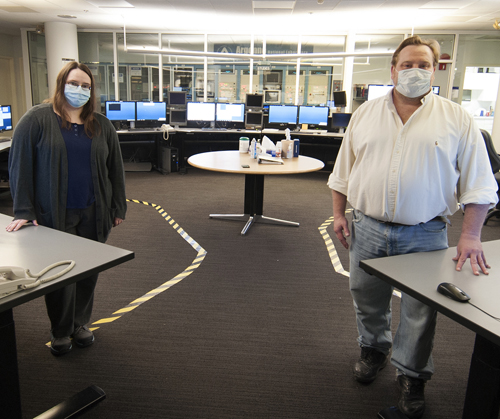
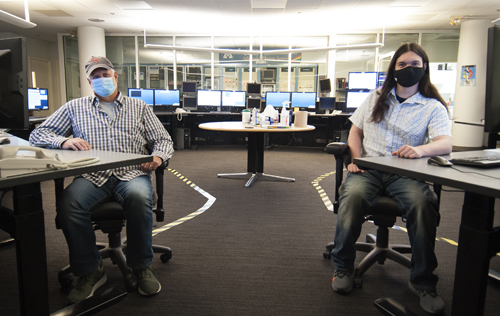
Left photo: Megan Kimbro and Steve Labuda. Right photo: Ted Grodecki (left, MCR crew chief): “There have been some inconveniences [during the pandemic], but nothing that I'd say are challenges. Things like disinfecting your work area at shift change [note the cleaning supplies on the table, background], distancing, and remembering to put a mask on when assisting the other operator with an issue that's come up or during their training sessions have become a habit/routine over the last few months. We're just doing our jobs.” Kyle Berg (right): “As an operator, we have to be highly adaptive in order to deal with the myriad duties and issues that come with the job. We have adapted to COVID in a variety of ways: Cleaning regularly and thoroughly, using new lines of communication, having increased awareness about distance between people and contact with surfaces, and more. These changes were to be expected given what we know of the virus, so I could not call them unusual, and the steps we have taken to adapt have not been particularly challenging as we have support from a variety of teams, resources, and good communication from management. As the situation continues to develop, we will continue to keep adapting. I am confident we will keep the lights on.”
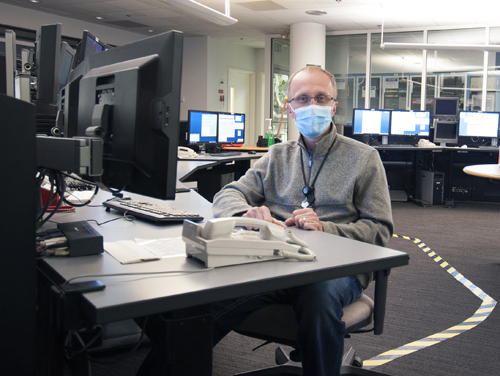
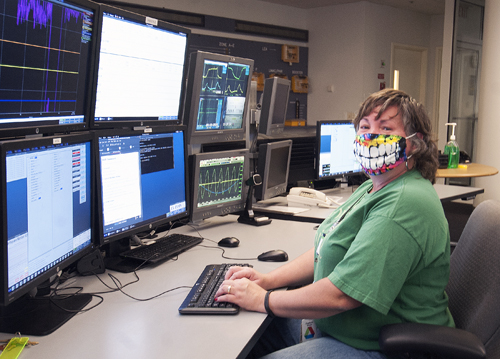
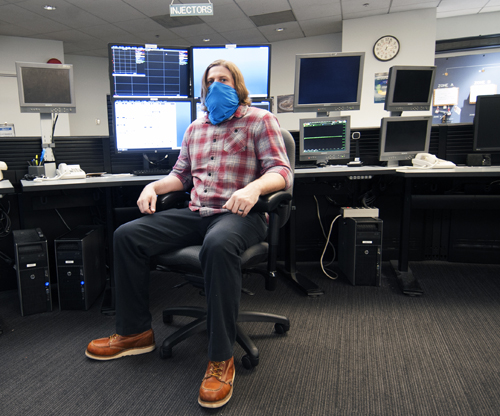
Ted Davis
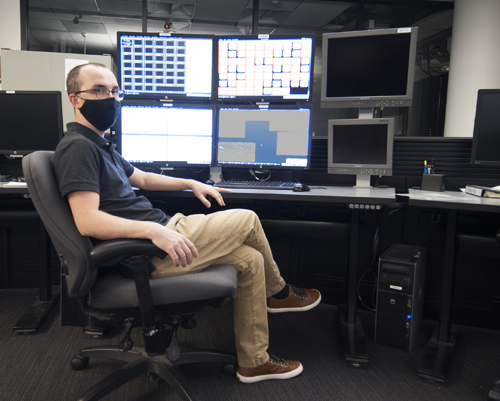
Eric Smith
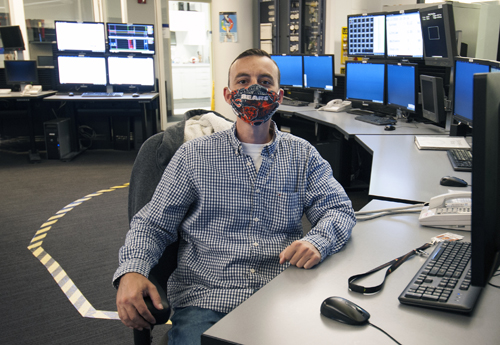
Sean Orne Not pictured: Lisa Berkland
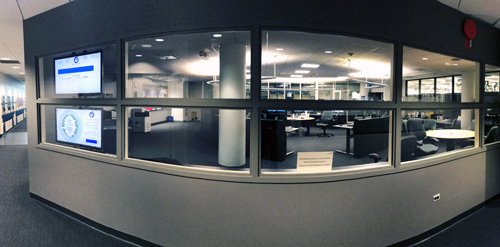
A panoramic (and distorted) view into the Main Control Room from the hallway. The monitors in the window at left show (top) the electron current in the storage ring (solid blue indicates a steady maximum “fill” of electrons) and (bottom) the beamline shutters that are currently open to allow x-rays into experiment stations. A mural depicting the APS storage ring is visible at left.
